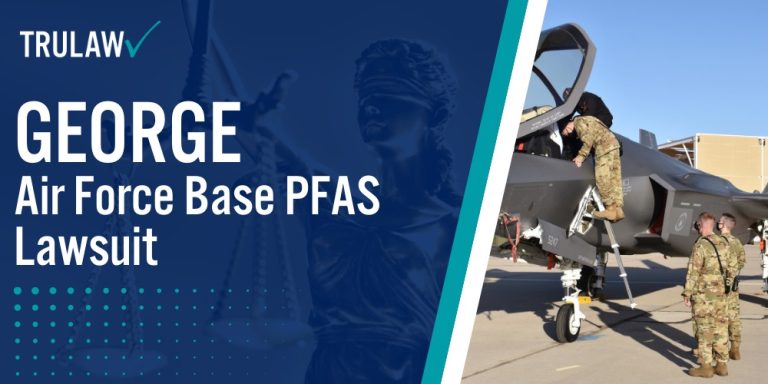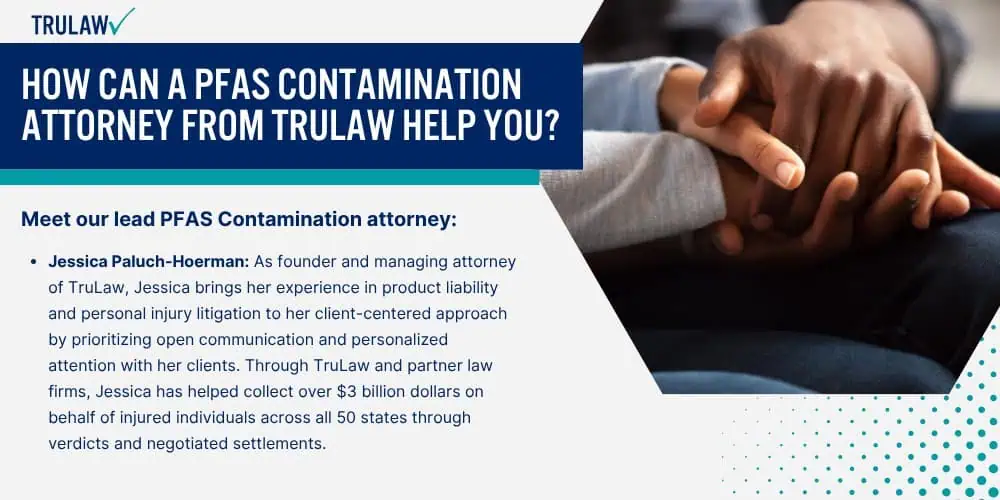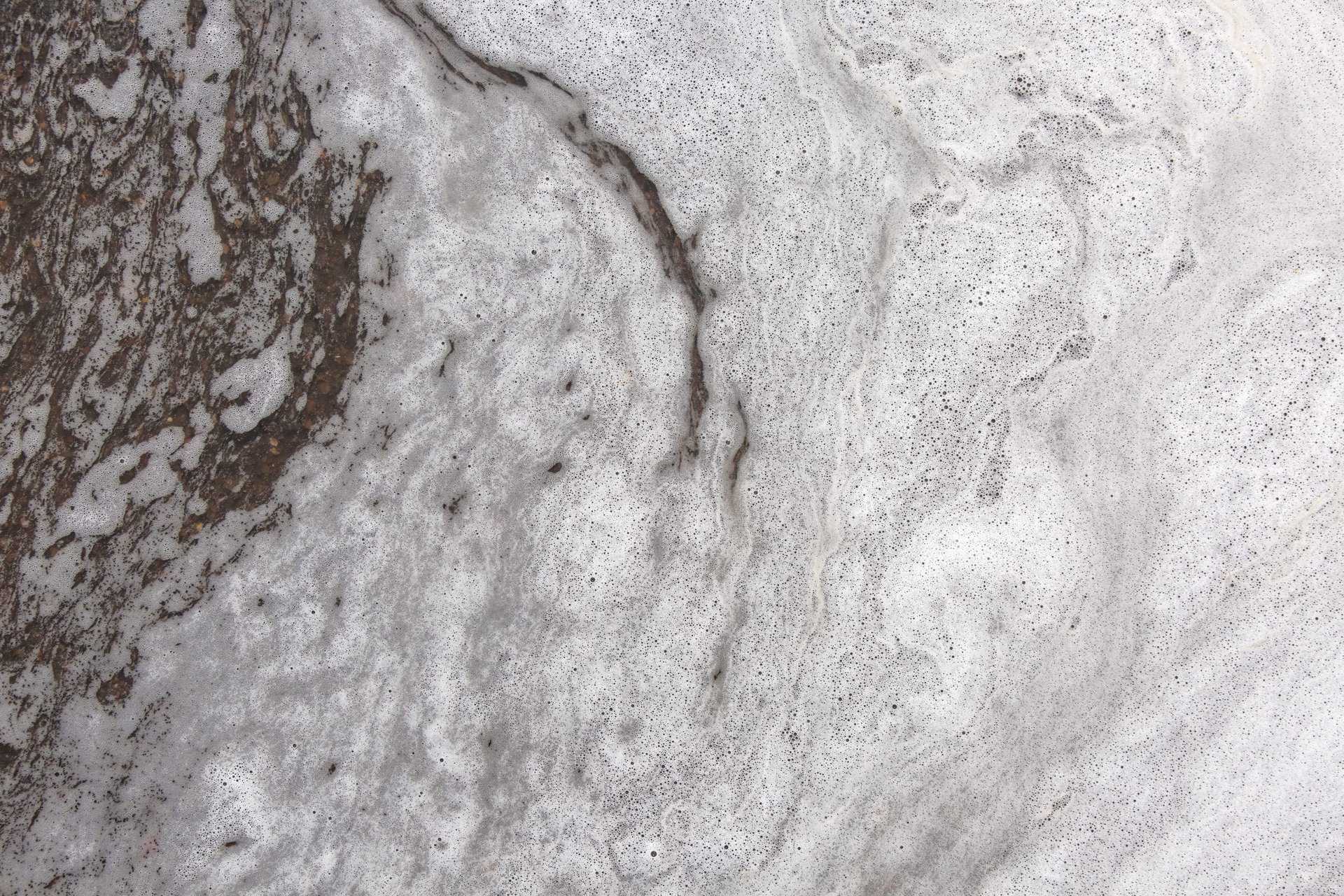The discovery of toxic contamination at George Air Force Base has left thousands of veterans and their families grappling with serious health consequences from decades of exposure to toxic chemicals in their drinking water.
Environmental testing conducted in 2018 revealed PFAS levels that exceeded EPA safety limits by more than 1,700 times, yet many who lived and worked at the base were never warned about the dangers lurking in their water supply.

Today, veterans, civilian workers, and family members who developed cancer and other serious conditions after consuming contaminated water at George AFB are pursuing legal action against chemical manufacturers responsible for producing these “forever chemicals.”
History of Chemical Exposure at George AFB (1941-1992)
George Air Force Base operated as a vital pilot training facility from 1941 to 1992, serving as home to thousands of military personnel and their families from World War II through the Cold War era.
During its 51 years of operation, the base housed advanced tactical fighter operations and trained pilots for combat missions from Vietnam through Desert Storm.
The routine use of Aqueous Film Forming Foam (AFFF) in firefighting training exercises, aircraft maintenance operations, and emergency response procedures led to widespread environmental contamination that would persist for decades after the base’s closure.
Military activities at George AFB that routinely used AFFF foam included:
- Live-fire aircraft training exercises: These high-risk simulations occurred multiple times weekly, exposing personnel to foam during fire suppression demonstrations and emergency response scenarios involving jet fuel.
- Hangar fire suppression system testing: Regular maintenance protocols required monthly system checks that released AFFF foam throughout hangar facilities, creating widespread exposure risks.
- Emergency response drills: Crash crews practiced fuel spill containment and aircraft fire suppression techniques, resulting in direct contact with AFFF chemicals during training operations.
- Equipment decontamination procedures: Military personnel used AFFF foam to clean firefighting equipment and vehicles, leading to repeated skin contact and inhalation exposure.
- Crash crew training operations: Firefighters underwent intensive training with AFFF systems, including hands-on practice with foam cannons and portable extinguishers.
- Fuel storage area fire prevention: Fixed suppression systems around fuel depots underwent quarterly testing, releasing substantial quantities of AFFF into surrounding soil, causing soil contamination and groundwater pollution.
The Air Force officially closed George AFB in December 1992 as part of the Base Realignment and Closure process, but by then, decades of AFFF use had already contaminated the soil and groundwater beneath the base.
In 1990, two years before its closure, George AFB was designated as a Superfund site by the Environmental Protection Agency, acknowledging the severe environmental contamination from PFAS and total petroleum hydrocarbons that threatened public health.
Current PFAS Levels and Environmental Testing Results
Environmental testing conducted by the Environmental Working Group in 2018 revealed catastrophic levels of PFAS contamination in groundwater at George Air Force Base, with concentrations that shocked environmental scientists and public health experts.
The testing detected combined PFOS and PFOA levels of 6,900 parts per trillion (ppt) – a staggering 1,725 times higher than the EPA’s 2024 Maximum Contaminant Level of 4 ppt for each chemical.
These findings confirmed what many veterans had long suspected: the water they drank, cooked with, and bathed in during their service was severely contaminated with toxic substances.
PFAS concentrations detected at George AFB include:
- Perfluorooctane sulfonic acid (PFOS): Measured at 1,690 parts per trillion (ppt), exceeding EPA health advisory limits by 423 times. This persistent chemical accumulates in human tissue and has been linked to kidney and testicular cancers.
- Perfluorooctanoic acid (PFOA): Detected at 5,210 ppt, representing 1,302 times the EPA limit. PFOA exposure correlates with increased cholesterol levels, thyroid cancer, and pregnancy complications.
- Perfluorobutane sulfonic acid (PFBS): Found at 1,770 ppt, drastically above EPA screening levels of 2,000 ppt. Studies associate PFBS with liver damage and hormonal disruption.
- Perfluoroheptanoic acid (PFHpA): Measured at 2,480 ppt, exceeding typical background levels by hundreds of times. This compound affects reproductive health and immune system function.
- Perfluorohexanoic acid (PFHxA): Detected at 12,600 ppt, the highest concentration found on base. PFHxA persists in groundwater and contributes to developmental delays in children.
- Perfluorononanoic acid (PFNA): Found at 170 ppt, above the EPA reference dose for chronic exposure. PFNA accumulation increases risks of high cholesterol and liver enzyme elevation.
These alarming contamination levels place George AFB among the most severely PFAS-contaminated military sites in the United States.
The persistence of these “forever chemicals” means that groundwater contamination continues to pose significant health risks to surrounding communities, as PFAS compounds do not break down naturally and can remain in the environment for decades or even centuries.
Affected Areas and Water Sources Beyond the Base
The PFAS contamination at George Air Force Base extends far beyond the installation’s boundaries, creating a toxic plume that has migrated through groundwater systems into surrounding Victorville communities and residential areas.
Environmental investigations (including analysis by the Environmental Working Group) have identified contamination in private wells, municipal water supplies, and aquifers that serve thousands of residents who never set foot on the military base.
The contamination zone encompasses not only the 5,347-acre base property but also neighboring residential developments, schools, and businesses that relied on groundwater sources contaminated with various inorganic compounds.
Areas affected by PFAS contamination from George AFB include, but are not limited to:
- Base housing units: Military families lived in these residences for decades, unknowingly exposed to PFAS through drinking contaminated water, with children particularly vulnerable during critical developmental years.
- Victorville neighborhoods within 3 miles: Residential communities downstream from the base experienced groundwater contamination, affecting thousands of households that relied on municipal water systems.
- Private wells near the base perimeter: Rural property owners discovered PFAS levels exceeding federal limits in their drinking water, forcing costly transitions to bottled water or filtration systems.
- Commercial properties utilizing groundwater: Local businesses, including restaurants and manufacturing facilities, faced contamination in their water supplies, impacting both employees and customers who experienced adverse health effects.
- Agricultural lands: Farms using contaminated irrigation water inadvertently spread PFAS through crops and livestock, creating potential food chain exposure pathways for consumers.
- Recreational areas: Parks, playgrounds, and community centers where families gathered became exposure sites through contaminated soil and water features, placing children at risk during outdoor activities.
Hydrogeological studies indicate that PFAS-contaminated groundwater continues to migrate through underground aquifers, potentially affecting new areas as the plume spreads through contaminated sites.
Current water treatment and cleanup efforts by the City of Victorville have attempted to address PFAS contamination in municipal supplies, but many private well owners remain unaware of the risks they face from PFAS exposure.
If you or a loved one lived or worked at George Air Force Base and developed kidney cancer, thyroid disease, or other serious health conditions after exposure to contaminated water, you may be eligible to seek compensation.
Contact TruLaw using the chat on this page to receive an instant case evaluation and determine whether you qualify to join others in filing a George Air Force Base PFAS Lawsuit today.






